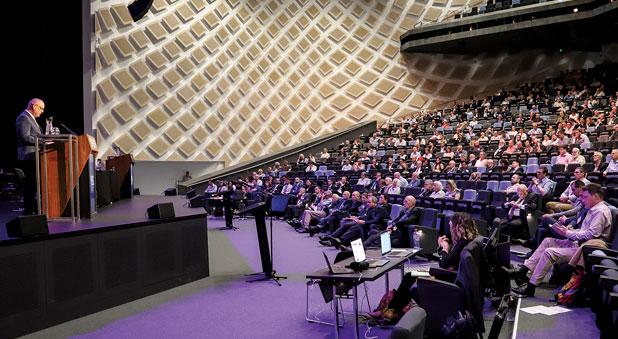The first session of the 53rd Synod is happening this month. Here’s a brief overview of what a Synod is and why they’re important.
What is a Synod?
A Synod is an assembly of church leaders and elected members gathering to govern the Diocese. It is similar to a parliament in that it is responsible for the order and good government of the Diocese.
People commit to serving on a Synod for three sessions, which happen over three years. This year will be the first session of the 53rd Synod.
A session of Synod typically lasts five days. In 2023, Synod meets on September 11-13, and September 18-19.
Who is the Synod?
The Synod is made up of a mix of rectors (senior ministers), and lay members (regular church attendees) who are elected by their local church to be representatives. Roughly one-third of the Synod are ministers and two-thirds are lay representatives.
In addition to this, the Synod also has a number of extra elected representatives. These include CEOs of diocesan organisations, clergy selected by the Archbishop, other lay members selected by the Standing Committee, and other diocesan officials.
In 2023, 20 per cent of the Synod are newly elected and will be attending for the first time.
What power does the Synod have?
The Synod has the power to shape the policies and procedures of the Sydney Anglican Church through resolutions and ordinances, and elect office bearers within the Diocese.
These policies and procedures influence a range of matters – from how churches operate, to how diocesan money is spent, to the church’s official theological position on key issues.
Any elected member of the Synod can put forward a motion to be debated and discussed, and any elected member can debate and vote on proposed motions, policies and ordinances.
Ordinances, policies, procedures, oh my!
Here are some of the key terms you may see used in Synod coverage:
Ordinances: the legislative framework of the Diocese, a legally binding set of rules and procedures. These cover issues from parish administration to constituting our organisations and schools.
Policies: these establish the standard practice of Synod in certain circumstances, but they don’t have the same legal standing as an ordinance.
Elections: the Synod is responsible for electing people to a range of positions and boards across the Diocese. These usually take place in the lead-up to a Synod.
Standing Committee: The elected group responsible for the affairs of the Synod in between sessions. Like Synod, it comprises a mix of rectors, lay members and other representatives from the Diocese.
Other things that happen at Synod
In addition to debates and decisions, Synod hears a series of presentations from different ministries and churches within the Diocese, elsewhere in Australia, and overseas.
Synod also celebrates when a parish changes status from a provisional to a full parish. Provisional status flags that it is facing financial challenges or is in a season of change. Synod takes time to give praise and thanks to God when a church becomes a full parish and celebrates kingdom growth.
There is also plenty of prayer, praise, Bible teaching and singing. The Synod session kicks off with a full church service at St Andrew’s Cathedral on day one. Each subsequent day starts with a Bible devotion, prayer and song.
Pray for Synod 2023
God our Father,
you judge your people with wisdom and rule us with love.
Give a spirit of understanding to the Synod of this Diocese,
that it might make wise decisions that will give glory to you
and be a blessing to your people.
Grant this through our Lord Jesus Christ
Amen
From An Australian Prayer Book
To keep up to date with our Synod coverage, you can follow us on Facebook and Instagram, sign up to our newsletter, or keep an eye on our website.

















